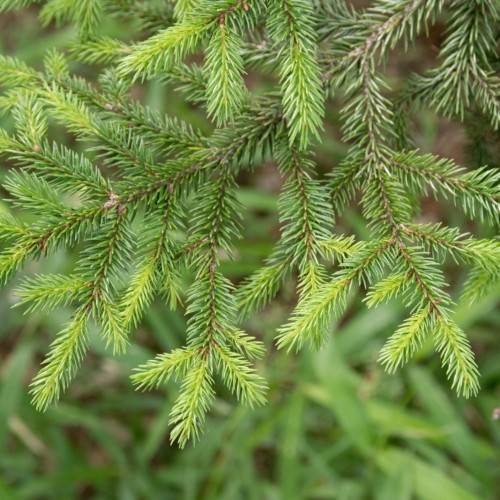
Sakhalin spruce
Picea glehnii 'Yatsubusa'
Cycle:
Perennial
Watering:
Average
Hardiness Zone:
4 - 7
Flowers:
Flowers
Sun:
Full sun,part shade
Cones:
Yes
Leaf:
Yes
Growth Rate:
Low
Maintenance:
Low
Drought Tolerant:
Yes
Salt Tolerant:
Yes
watering
Sakhalin spruce (Picea glehnii 'Yatsubusa') thrives best when given regular watering and good drainage. Water your plant when the soil feels dry, usually about 1-2 times a week. Make sure to water it deeply, so that the water reaches all the way to the bottom of the rootball. When watering, water until the soil is saturated. Do not water the plant more than 2 times a week, as this can promote root rot. Water in the morning, and allow the water to dry out by the end of the day. Feel the soil before watering to ensure it is dry. In winter, reduce the frequency of watering and give only enough to keep the rootball from drying out completely.
sunlight
Sakhalin spruce (Picea glehnii 'Yatsubusa') does best with full sun, meaning at least 6 hours of direct sunlight per day. This species can tolerate partial shade, but it will not reach its full potential. For optimal growth, water the plant deeply and allow the soil to dry out slightly between waterings. Avoid letting the plant stay constantly wet, as this can cause root rot. In terms of seasons, Sakhalin spruce will need the most sunlight during the summer to reach its full potential as a decorative addition to the landscape.
pruning
Sakhalin spruce (Picea glehnii 'Yatsubusa') should generally be pruned in late spring or early summer, after the wild new growth is on and has hardened off a bit. Generally speaking, Sakhalin spruce should not be pruned any harder than 1/3 of the total tree size. If the tree is overgrown or needs to be reshaped, more severe pruning can be done in late summer or early autumn. This allows for new growth undisturbed, and the tree can be encouraged to shoot out fresh new growth in the season following pruning. It is best not to prune or trim more than once a year, and new growth should be monitored for any pruning or shaping to be done the following season.
